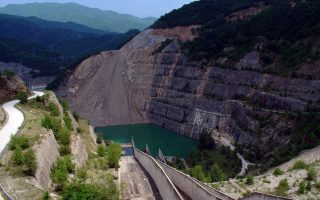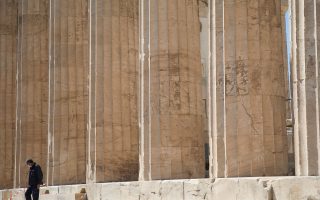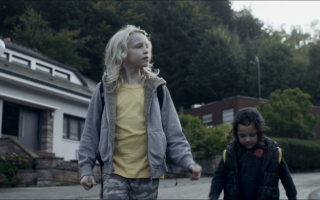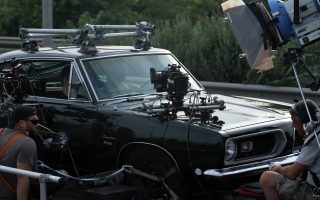Theo Angelopoulos: The story that never ends
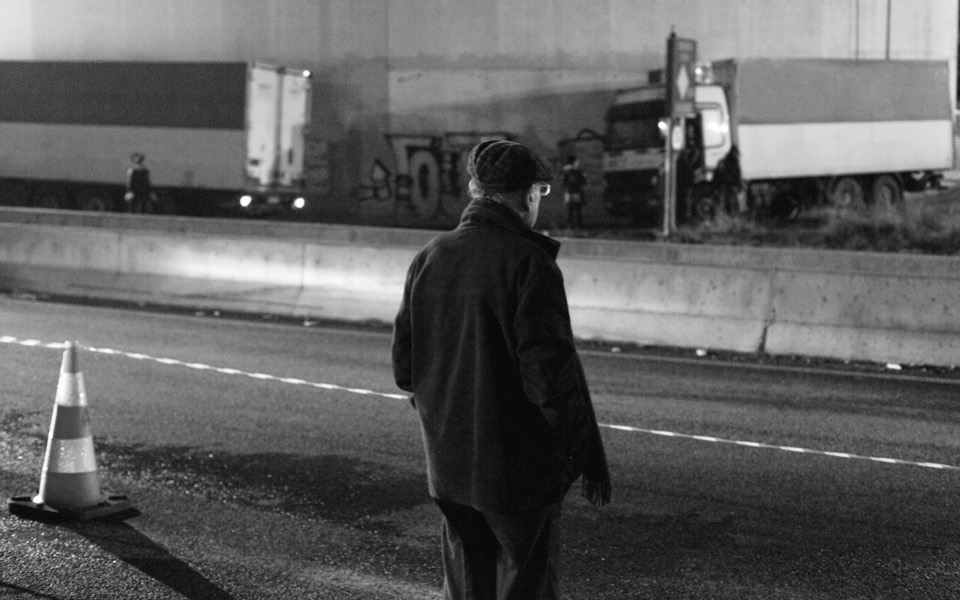
“I saw him in my sleep again.” It’s an experience shared by many of those who knew and worked with Theo Angelopoulos and especially those who were with him at the film shoot on January 24, 2012 that cost the celebrated Greek filmmaker his life. Ten years on, the events of that afternoon continue to haunt the people who were there.
Producer Costas Lambropoulos (who had working with the director since 1984 and the film “Voyage to Cythera”), director Panayiotis Portokalakis (his assistant on “Ulysses’ Gaze,” 1995) and photographer Ilias Bourgiotis (they first met in 2004 on “The Weeping Meadow”) were among the cast and crew on the set of “The Other Sea.” Two of his daughters were also there, working with him for the very first time, Katerina as a set designer and Eleni in casting.
“The port of Piraeus is where everything happens, with the constant departures and arrivals of ships, like a perpetual migration, internal and external,” Angelopoulos had said, explaining the premise of what was his 14th and last – unfinished – film. The initial idea had come from Bertolt Brecht’s “Threpenny Opera,” but we will never know the final story, what his vision for the film was.
This tribute to Theo Angelopoulos was prompted by the photograph here, taken by Ilias Bourgiotis on that day, for no particular reason. “It wasn’t very interesting, photographically. I saw Angelopoulos next to the cordon looking somewhere in the distance.”
According to Lambropoulos, the filmmaker “was about to cross the road to give instructions about how the trucks carrying the migrants needed to be arranged. The accident happened as he was crossing again on his way back.”
The photo was taken on the regional highway between the Piraeus suburbs of Drapetsona and Keratsini, moments before Angelopoulos was hit by a passing motorcycle. He died later in hospital after lying in a ditch on the side of the road for more than hour waiting for an ambulance. He was 76 years old.
I remember Toni Servillo, the Italian actor, crying in a corner of the emergency waiting room and Angelopoulos’ wife, Phoebe, and their three daughters; I remember Eleni coming to tell us that it was all over. I remember cinematographer Andreas Sinanos, production director Takis Katselis, assistant director Margarita Manta and so many others standing around looking dumbstruck, frozen, devastated.
I ask Portokalakis what Angelopoulos may have been thinking about as he prepared to cross the road. “I don’t know that he was thinking about anything. He was visualizing. He was constructing the shot. He had insisted on this particular spot in Drapetsona. I was aware of the risks, because the area could not be controlled and was not protected. But when Theodoros found what he wanted, he wouldn’t budge. It was easier to change reality than Theodoros’ mind,” he says.
Monday was the 10-year anniversary of that terrible day and time has not softened the edges. For the witnesses, it has not even faded the narrative playing out in their minds from their different points of view. As they struggled to come to terms with what had just happened, with the terrible reality of a real-life event on the set of a fictional drama, a television van suddenly appeared. A young female reporter jumped out, and turned to the crew: “So, guys, what do we have here?” she asked in an overly ambitious tone. Within the space of just a few hours, they saw so many of the grimmer aspects of Greece passing before their eyes, according to Portokalakis, who chooses to share this particular memory.
“I often think of those silent trips in the Balkans I took with Theodoros,” says Lambropoulos. “He wouldn’t even let me play the radio. He watched the landscape and created the screenplay in his mind.”
Portokalakis also talks about a question that has been nagging at him ever since the accident. “He had called me on the day of the fateful shoot and asked me to go to Drapetsona earlier than planned with him, but he didn’t say why. I couldn’t make it at the time he wanted so I went as originally planned. I wonder whether things would have turned out different if the butterfly had just flapped its wings another way,” he says.
The photographs taken by Bourgiotis, who was on the set of “The Other Sea,” capturing the action off camera rather than in front of it, were kept shut up in boxes for a long time. “I couldn’t face looking at what I’d shot… I titled the album I published several years later, ‘Eternity’s Gaze,’” he says, a play on the titles of the Angelopoulos classics “Ulysses’ Gaze” and “Eternity and a Day.”
In a brief eulogy at Angelopoulos’ funeral at the First Cemetery in Athens a few days later, Servillo sought to thank the Greek director on behalf of all the foreign actors he had worked with over the years: Marcello Mastroianni, Jeanne Moreau, Gian Maria Volonte, Harvey Keitel, Bruno Ganz, Willem Dafoe and so many more.
“We were all fortunate enough to work under your direction. Thank you,” he said.
A year later, in the summer of 2013, I asked Dafoe during an interview on his appearance in Robert Wilson’s play “The Old Woman” in the English city of Manchester what he had held onto from working with Theo Angelopoulos in “The Dust of Time” in 2008.
“He was a very tough and demanding director,” said the American actor.
“This is how we communicated with Theo: Me with no Greek or French. He with very little Italian and English! He would show what he wanted and I’d copy him. The only thing he could say with a perfect accent was, ‘And then, you cry!’ I also remember that secret smile of his. He’d say something really serious and then suddenly his face would light up with that enigmatic smile.”
“Ulysses’ Gaze” ends with an empty frame flickering on a wall, followed by Harvey Keitel, as A: “When I return, it will be with another man’s clothes. Another man’s name. My coming will be unexpected. If you look at me unbelieving, and say, ‘You are not he,’ I will show you signs and you will believe me. I will tell you about the lemon tree in your garden. The corner window that lets in the moonlight. And then signs on the body. Signs of love… Between one embrace and the next, between lovers’ calls, I will tell you about the journey, all the night long… the whole human adventure. The story that never ends.” Theo Angelopoulos, April 1993.
